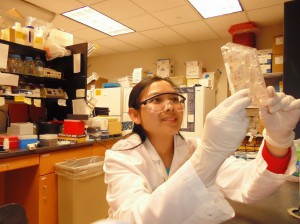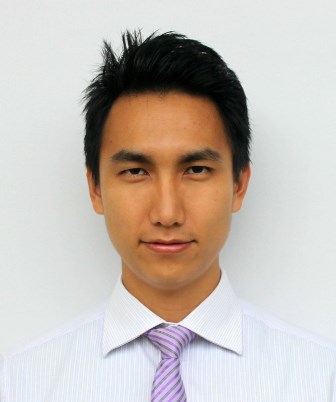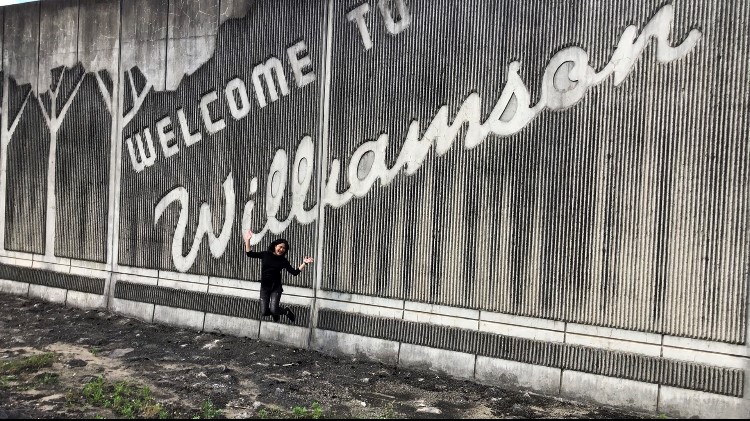
Seanghuoy Ho, 2012-2014, Cambodia examining antibacterial compounds’ efficacy against the bacterial community known as “biofilm” in the laboratory at the Waksman Institute of Microbiology, Rutgers, the State University of New Jersey
In honor of the United Nations’ International Day of Women and Girls in Science, we are re-sharing Cambodian Fulbrighter Seanghuoy Ho’s post about her journey towards becoming a microbiologist, the research she conducted during her grant at Rutgers University, and how she plans on sharing her work back home in Cambodia.
When I was a little girl, I once watched a science program on TV in which I saw people wearing long white coats and goggles, holding long, round tubes. The tubes contained cloudy solutions and the people were viewing these solutions under machines called microscopes. I learned from that TV show that those solutions contained bacteria and that they were living creatures. Bacteria come in different shapes and colors, and need food, oxygen and specific temperatures in order to survive. As a kid, I was excited to learn more about these tiny creatures, even though at that time, I had no clue as to why people would want to study them. I dreamed about becoming a scientist one day and conducting research on these wonderful, tiny living things.
Now, thanks to a Fulbright Foreign Student grant, I am a master’s degree student in microbiology at Rutgers, the State University of New Jersey. Since my childhood, I’ve learned a great deal about microbes, specifically bacteria. I realize that I mostly saw bacteria on TV when they caused an outbreak. The majority of bacteria, however, are harmless and even beneficial to human beings. Antibiotics, chemical compounds produced by particular bacteria and used to treat many diseases, are one typical example of their benefits.
I am currently doing research in Dr. Richard H. Ebright’s lab at Waksman Institute of Microbiology, a place with a long history of antibiotic discovery. While my lab colleagues are working on determining the structure of biological materials and synthesizing new potential drug compounds, I have been working on characterizing the efficacy of those compounds against various pathogenic microbes, which are problematic in some indwelling medical devices. I am testing various antibacterial compounds which will hopefully be active against the drug-resistance pathogenic microbe community known as “biofilm.” Biofilm is very difficult to treat because it decreases susceptibility to many drugs; hence, new drugs are urgently needed. With guidance from my advisers, I will grow bacterial biofilm in the laboratory and test them with a number of antibacterial compounds, both naturally-produced and synthesized. With the experience I’ve gained in the lab, I have learned some fundamental microbiological techniques necessary for researchers to conduct preliminary studies on drug development. With the knowledge I’ve gained in the classroom, I have been able to visualize how I can apply scientific principles to real medical application. Furthermore, the Fulbright “From Lab to Market” Enrichment Seminar I attended during the first year of my grant gave me a perfect opportunity to extend my understanding on how to apply science methods to social entrepreneurship.
Cambodia is a developing country and is in need of basic scientific research to foster its research and development capacity. Undoubtedly, building scientific skills through education is one of our country’s top priorities. To be able to help with this, I am planning on sharing my knowledge by teaching at a university and possibly by building collaborative connections with pharmaceutical companies when I return to Cambodia. I want to be able to convince Cambodia’s up-and-coming generations that conducting science with microscopic creatures is not only beneficial, but also a great deal of fun!



No Comments